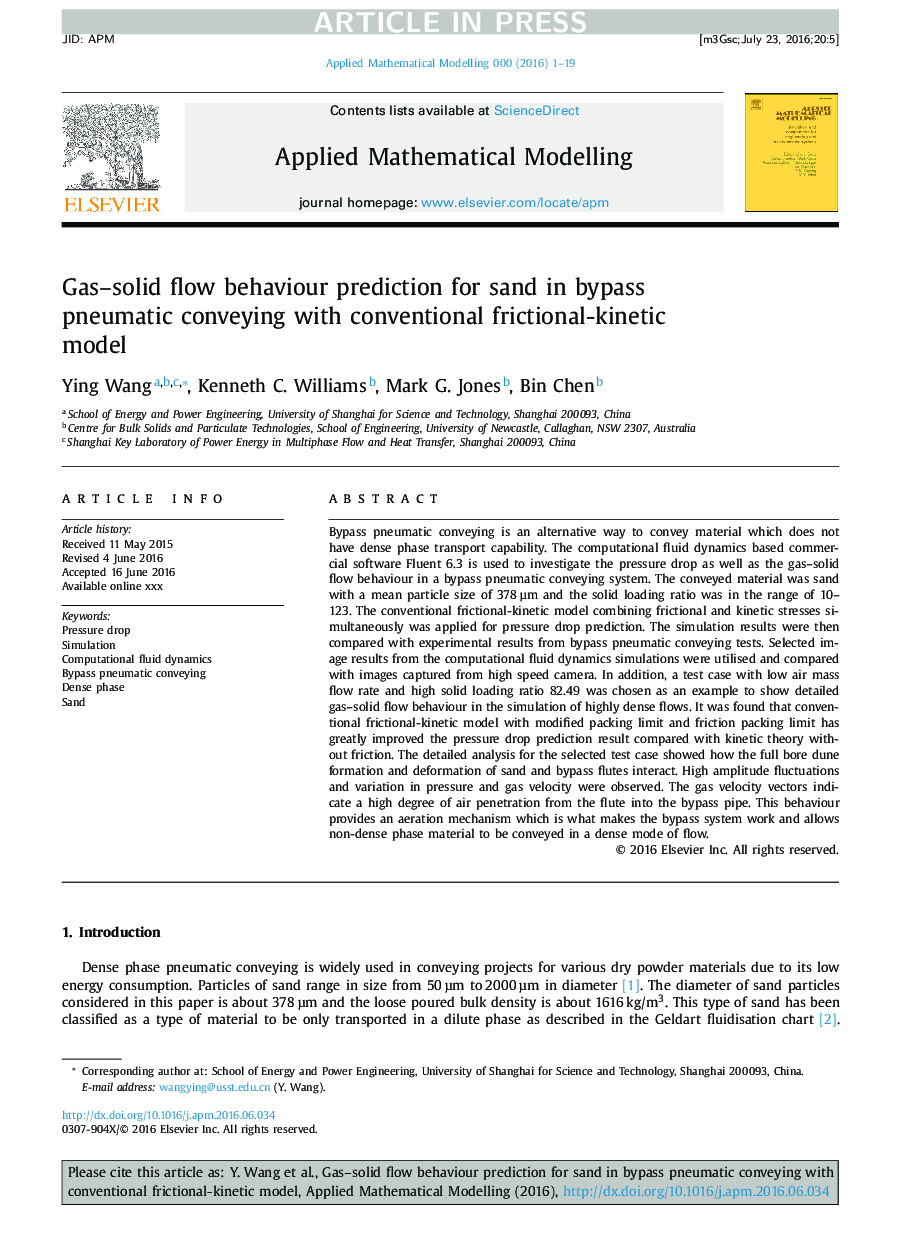| کد مقاله | کد نشریه | سال انتشار | مقاله انگلیسی | نسخه تمام متن |
|---|---|---|---|---|
| 8052283 | 1519393 | 2016 | 19 صفحه PDF | دانلود رایگان |
عنوان انگلیسی مقاله ISI
Gas-solid flow behaviour prediction for sand in bypass pneumatic conveying with conventional frictional-kinetic model
ترجمه فارسی عنوان
پیش بینی جریان گاز برای ماسه در انتقال پنوماتیک با استفاده از مدل اصطکاک-جنبشی متعارف
دانلود مقاله + سفارش ترجمه
دانلود مقاله ISI انگلیسی
رایگان برای ایرانیان
کلمات کلیدی
افت فشار، شبیه سازی، دینامیک سیالات محاسباتی، دور زدن پنوماتیک انتقال، فاز متراکم شن،
موضوعات مرتبط
مهندسی و علوم پایه
سایر رشته های مهندسی
مکانیک محاسباتی
چکیده انگلیسی
Bypass pneumatic conveying is an alternative way to convey material which does not have dense phase transport capability. The computational fluid dynamics based commercial software Fluent 6.3 is used to investigate the pressure drop as well as the gas-solid flow behaviour in a bypass pneumatic conveying system. The conveyed material was sand with a mean particle size of 378 µm and the solid loading ratio was in the range of 10-123. The conventional frictional-kinetic model combining frictional and kinetic stresses simultaneously was applied for pressure drop prediction. The simulation results were then compared with experimental results from bypass pneumatic conveying tests. Selected image results from the computational fluid dynamics simulations were utilised and compared with images captured from high speed camera. In addition, a test case with low air mass flow rate and high solid loading ratio 82.49 was chosen as an example to show detailed gas-solid flow behaviour in the simulation of highly dense flows. It was found that conventional frictional-kinetic model with modified packing limit and friction packing limit has greatly improved the pressure drop prediction result compared with kinetic theory without friction. The detailed analysis for the selected test case showed how the full bore dune formation and deformation of sand and bypass flutes interact. High amplitude fluctuations and variation in pressure and gas velocity were observed. The gas velocity vectors indicate a high degree of air penetration from the flute into the bypass pipe. This behaviour provides an aeration mechanism which is what makes the bypass system work and allows non-dense phase material to be conveyed in a dense mode of flow.
ناشر
Database: Elsevier - ScienceDirect (ساینس دایرکت)
Journal: Applied Mathematical Modelling - Volume 40, Issues 23â24, December 2016, Pages 9947-9965
Journal: Applied Mathematical Modelling - Volume 40, Issues 23â24, December 2016, Pages 9947-9965
نویسندگان
Ying Wang, Kenneth C. Williams, Mark G. Jones, Bin Chen,
